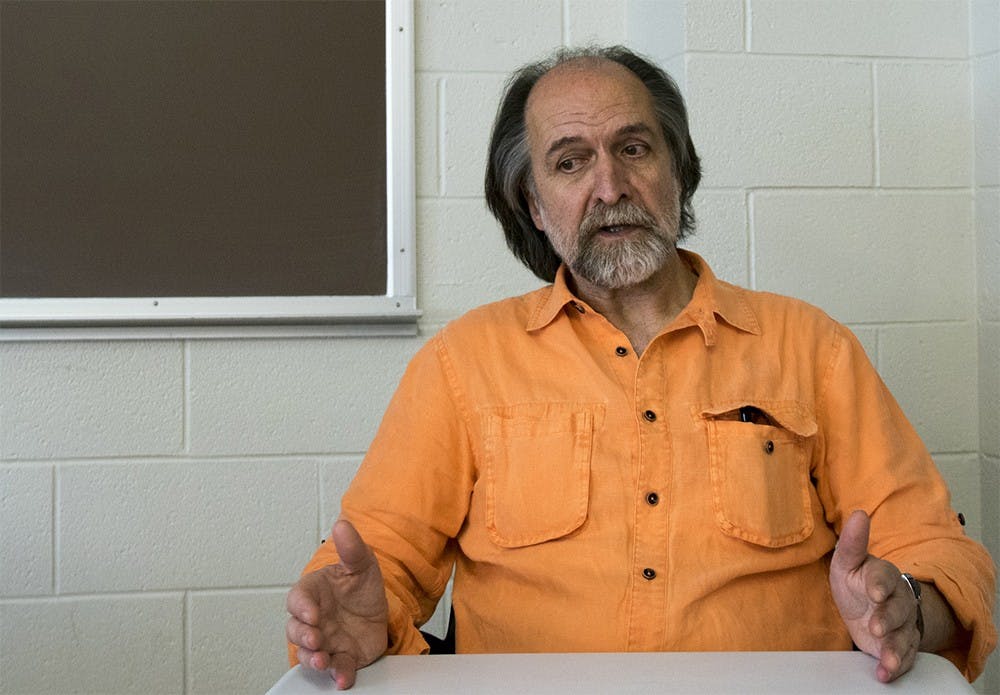Although he is in charge of most of the planning, organizing and promotion of the annual Italian film symposium, Antonio Vitti, a professor of Italian cinema at IU, said his favorite part is naming and grouping all of the panel presentations.
It is a creative process, Vitti said.
“By looking at the papers the speakers send, I try to find similarities or contrasts, and I like to put them in sessions with people that stimulate discussions,” he said.
With 13 different panels, six films and dozens of speakers, Vitti has put together the seventh Film Symposium on New Trends in Modern and Contemporary Italian Cinema.
It is taking place at the IU Cinema today until Saturday.
Vitti said putting together the symposium has been a continual process.
He was helped by Andrea Ciccarelli, dean of the Hutton Honors College.
He is already preparing for next year’s symposium.
The work goes on all year, he said.
“People will start sending me abstracts and proposals, and then I have to start sending acceptance letters and organizing the sessions,” Vitti said.
This year’s symposium revolves mostly around the work of Franco Maresco, an award-winning Italian filmmaker.
Maresco’s post-modern style has been influential since his rise in the 1980s.
Films to be screened this weekend include “The Return of Cagliostro,” “I am Tony Scott,” “Berlusconi: A Sicilian Story,” “I Don’t Know the Men of this City,” “The Uncle From Brooklyn” and “Totò Who Lived Twice.”
Vitti said he is curious to see how the general public reacts to Maresco’s work.
Maresco’s films apply a bittersweet, grotesque comedy style, he said.
The films also focus on marginalized people, Vitti said.
“These are not glamorous people,” he said. “These are not glamorous stories. A lot of people don’t go to the movies to see these sorts of films.”
Along with the films will be several panel presentations from Italian film scholars from IU and from around the world.
The panel presentations often turn into heated debates, Vitti said.
These debates involve great discussions each year, he said.
“For some, it may look like we’re actually fighting, but we’re not. We’re having open discussions and disagreements, and it’s fun.”
Once Vitti came to teach at IU, he said the first thing he wanted to do was broaden students’ minds with Italian film.
“One of the things that I asked is that I wanted to create an Italian film symposium with screenings and representatives,” he said. “My goal was to bring new trends in Italian cinema and show what is going on today.”
The first year’s symposium took place all over campus and was unorganized, he said.
The following year, he said he met with Jon Vickers, who was in the process of renovating and opening the IU Cinema.
“He said, ‘Let’s try it and see how it works out,’ and it was really successful,” Vitti said.
Since its second year in 2011, the symposium has been at the IU Cinema.
Vitti said this gives speakers and filmmakers the opportunity to interact with each other.
“It’s not just that you present and then you run away,” he said. “I’ve seen that in many conferences. We’re all here from eight o’clock in the morning until midnight every day.”
Lisa Dolasinski, one of Vitti’s assistants and a speaker at this year’s symposium, said film is one of the best mediums to highlight Italian culture.
Film is a visual and auditory experience, and Dolasinski said she considers it to be better than literature.
“Culture and cinema can’t be separated,” Dolasinski said. “There’s a story beyond what you see, too, and I think that’s very important.”
Noticing an increase in audience attendance during the past years, Vitti said he is looking forward to this year’s symposium and future ones to come.
“New trends, hearing what young people are doing, learning new things, meeting new people, watching new movies that I find very stimulating,” he said. “I cannot ask for anything better.”
More scheduling information can be found at frit.indiana.edu






